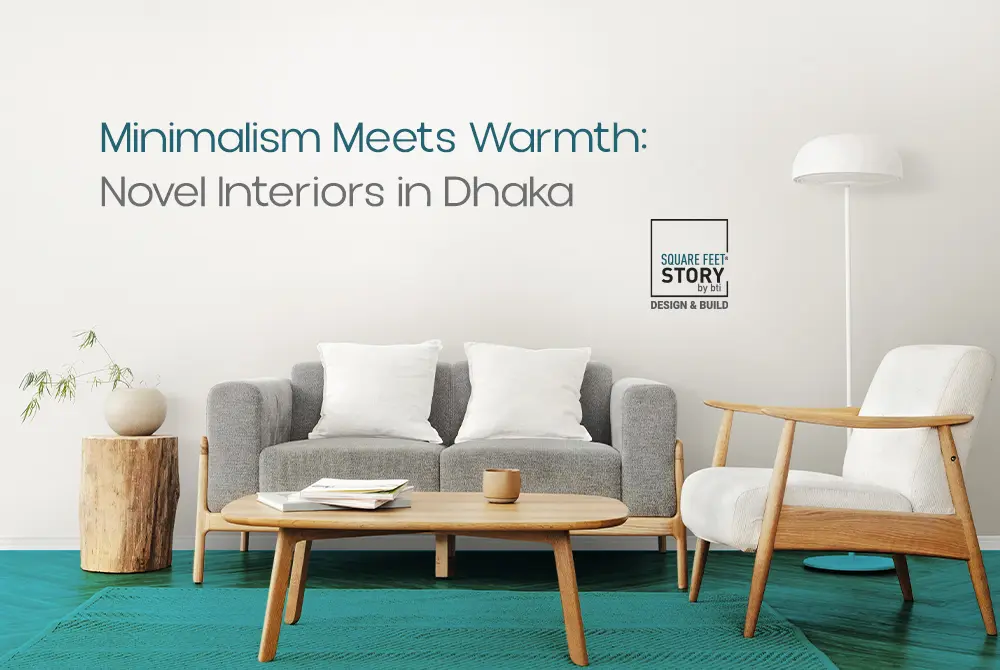
Minimalism Meets Warmth: Novel Interiors in Dhaka
Dhaka’s pulse is a mix of colour, community and carefully curated chaos. Lately, a new aesthetic has been quietly emerging in apartments, studios, and boutique cafés across the city: minimalism softened with warmth. It’s the intersection of clean lines and lived-in comfort, pared back, but never cold. Here’s a friendly guide to what that look means, how it works in Dhaka’s climate and culture, and simple ways you can bring it into your home.
What “minimalism with warmth” looks like
Think of minimalism’s restraint; uncluttered surfaces, simple silhouettes, functional furniture, then add tactile layers, warm tones and thoughtful nods to craft. The result is a calm, breathable space that still feels inviting and personal. It’s less about strict rules and more about intentional choices: keep what matters, let go of what doesn’t, and make the essentials feel pleasant to be around.
Why does it fit Dhaka?
Dhaka’s homes often juggle small footprints, lively families, and practical needs. This tempered-minimal approach solves for that by:
- Maximising usable space with multipurpose furniture.
- Embracing natural ventilation and cross-breezes is important in our humid climate.
- Blending modern simplicity with local textiles and crafts so interiors feel familiar, not foreign.
Materials & colours that warm a minimal base
Start with a neutral canvas; off-whites, soft greys, muted clay; then layer warmth through texture and tone.
- Natural woods: light mango or teak finishes for flooring and furniture add depth without overwhelming.
- Textiles: handloom cottons, khadi throws, and woven rugs introduce softness and pattern in controlled doses.
- Accent tones: terracotta, mustard, deep olive or dusky rose work well as small pops — cushions, an accent chair, or pottery.
- Plants: big-leaf indoor plants or small indoor herb pots add life and help with air quality.
Avoid neon or overly saturated palettes; subtle, grounded colours keep the calm.
Furniture & layout — less, but better
Minimalism here is practical: choose pieces that earn their place.
- Multi-use furniture: ottomans with storage, extendable dining tables, and wall-mounted desks.
- Low profiles: low sofas and beds keep sightlines open in compact rooms.
- Negative space: leave breathing room around furniture so movement feels easy and the room reads as uncluttered.
- Selective display: keep surfaces clean but curate a few meaningful objects; a brass lamp, a woven basket, a framed photograph.
Remember: minimal doesn’t mean empty. It means every item has purpose and personality.
Lighting: the secret to cosy minimalism
Lighting transforms a neutral room into something warm and welcoming.
- Layered light: combine ambient ceiling light, soft table lamps, and targeted reading lights.
- Warm bulbs: choose bulbs around 2700–3000K for a comfortable glow.
- Natural light: use light, sheer curtains to let daylight in while limiting heat — folded cotton or muslin work beautifully.
- Statement fixtures: one sculptural pendant or a woven rattan lamp can act as focal point without clutter.
Local craft & personal touches
Integrating Bangladeshi craft keeps the look grounded and original.
- Handloom textiles: use sari fabric or handloom curtains as cushion covers or wall hangings.
- Bamboo & cane: lightweight, breathable, and perfect for chairs, screens, and lampshades.
- Pottery & ceramics: small collections on an open shelf read like art, not clutter.
- Family heirlooms: one or two meaningful objects, a brass bowl, an old print: make the space yours.
Practical tips for getting started
- Edit first: remove anything you haven’t used or loved in a year. Keep storage accessible for day-to-day items.
- Pick a palette: three main colours (base, mid, accent) keep decisions simple.
- Invest in textiles: rugs, throws and cushions are the fastest way to add warmth.
- Use vertical space: floating shelves and hooks free floor area.
- One project at a time: refresh a corner or a single room; small wins add up.
A final note
Minimalism meets warmth is not a checklist; it’s a way of making choices that respect both function and feeling. In Dhaka, where homes hold stories, gatherings and work-life overlaps, this approach helps create spaces that are clean, calm and deeply inhabitable — modern but human. Start small, trust your senses, and build a home that breathes.

